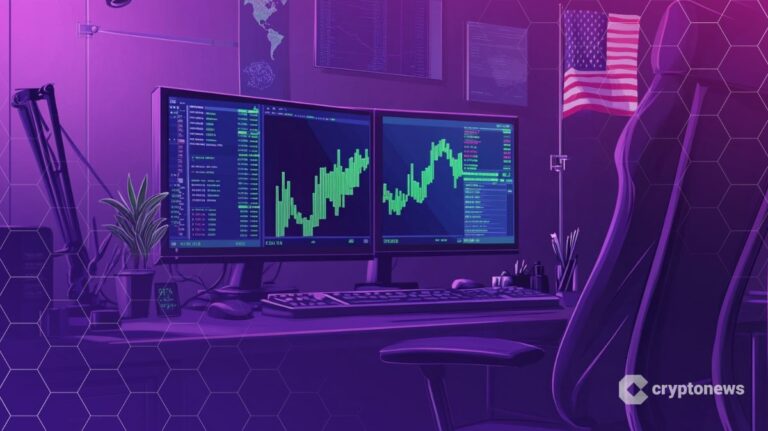
ADAM SMITH would be baffled by microelectronics. When the great economist died in 1790 James Watt’s two-cylinder steam engine passed for the height of technological sophistication. If he recognised the prefix “nano”—a fair bet for a precocious classicist proficient in dead languages by 14—it would be as a derivation of the Greek word for “dwarf”, not as a reference to the billionths of a metre in which modern semiconductors are measured. The word “billion” had entered the English language by Smith’s time but the number it denotes would have seemed unfathomable. Some 200bn transistors etched onto a few halfpennies in Nvidia’s latest Blackwell artificial-intelligence (AI) chip? Black magic, even for an enlightened Scottish rationalist.
The man who observed that “the division of labour is limited by the extent of the market” would, though, be on familiar ground seeing the global chip industry. Stripped of modern jargon, the semiconductor supply chain is Smith’s insight in action. As the market’s extent has swelled, from sales of $45bn in 1979 (in today’s money) to perhaps $600bn in 2024 and, forecasters reckon, over $1trn by the early 2030s, labour has been divvied up accordingly.
Gone are the integrated chip giants of the 1970s that, like America’s Intel back in the day, did everything themselves. This is the era of hyperspecialisation. Nvidia and other designers prepare the blueprints. “Foundries” like TSMC of Taiwan turn these into physical products by feeding silicon from one set of firms into machines assembled by another. These in turn contain gubbins from even more specialised providers, and so on.
What has not been split as finely is the AI windfall. Since mid-2022 the world’s 100 biggest semiconductor companies by market capitalisation have added $5.4trn in shareholder value. The 48 foundries and equipment-makers among them got just $1trn. The 32 “fabless” chipmakers, which design but do not manufacture their own processors, nabbed $4.2trn. Nvidia, whose chips are favoured by AI model-makers, captured three-quarters of that figure. (The 20 firms that continue to both design and manufacture chips, like Intel and Samsung, made barely any gains.)
Nvidia’s good fortune can be explained by its dizzying financial results. Its revenues nearly quadrupled between the first half of 2022 and the same period this year. It is on course to make $71bn in net profit in 2024, up from $8.4bn two years ago. Still, the foundries and toolmakers may be forgiven for feeling nettled. Nvidia’s 31 fabless peers are worth nearly as much as the foundries and equipment firms, despite bringing in half as much revenue and only two-fifths as much net profit. They also spend less than half as much on fixed assets and research and development (R&D). Moreover, the equipment-makers (though not the asset-heavy foundries) boast higher operating margins and a better return on capital than the fabless chipmakers.
The disparity is all the more curious in light of Smithian hyperspecialisation’s side-effect in the chip industry: its hyperconcentration everywhere except the busy fabless end. As product niches have narrowed, the chip supply chain has come to resemble a string of micro-monopolies and duopolies. TSMC and Samsung (which makes chips for clients as well as for itself) tower over the foundry business. ASML of the Netherlands is the sole purveyor of advanced lithography gear. DISCO, a Japanese company, sells 85% of the precision tools to grind and dice silicon wafers into shape. Cadence and Synopsys, two American firms, share the market for chip-design software. Advantest, from Japan, and Teradyne, from America, control post-production chip testing.
The niches may be small but barriers to entry are sky-high. Relative to market size, downstream firms spend huge sums on capital investments and R&D. For DISCO the annual figure is equivalent to 10% of its total addressable market; for ASML and TSMC it exceeds 20%. State-controlled Chinese challengers willing to stomach the necessary investments are being shut out of foreign markets on national-security grounds. To top it off, the incumbents can tap $150bn in handouts from Western and Japanese governments desperate to rebuild domestic chip industries.
If all this looks like a rent-seeker’s paradise, it doesn’t feel like one, sighs a big toolmaker’s finance chief. For some micro-oligopolists that is because they sell directly to similarly domineering firms one link up the value chain. Having only a handful of buyers tempers a seller’s market power. Other companies benefit from a more diverse customer base but have preferred not to squeeze big purchasers such as TSMC, notes Chris Miller, a scholar of semiconductor history at Tufts University.
Poolside manner
Quiescence is harder to sustain when demand for AI chips from deep-pocketed buyers such as Microsoft and Google lets Nvidia charge a fortune for each new model. Its gross margin is now 75%, up from 60% in 2022. Blackwells may go for $40,000 apiece, and tech giants are mulling purchases of a million or more. TSMC, the profit pool’s second-biggest bather, is expected to raise prices for cutting-edge manufacturing by up to 15%. Other firms that help turn blueprints into reality feel entitled to some of the bonanza, especially when the flow of income from China is slowing as America restricts high-tech exports to its geopolitical adversary.
The fabless and their suppliers could improve their profitability in tandem if all raised prices. But this might crush demand for the end product. Investors’ readiness to punish any hint of such softness, like ho-hum sales forecasts from AMD, a fabless rival of Nvidia’s, on October 29th, constrains the chipmakers’ pricing power. That may prove less of a deterrent downstream. Don’t be surprised if the reluctant oligopolists become a bit less bashful about flexing their rent-seeking muscles by the poolside. ■
Subscribers to The Economist can sign up to our new Opinion newsletter, which brings together the best of our leaders, columns, guest essays and reader correspondence.



















